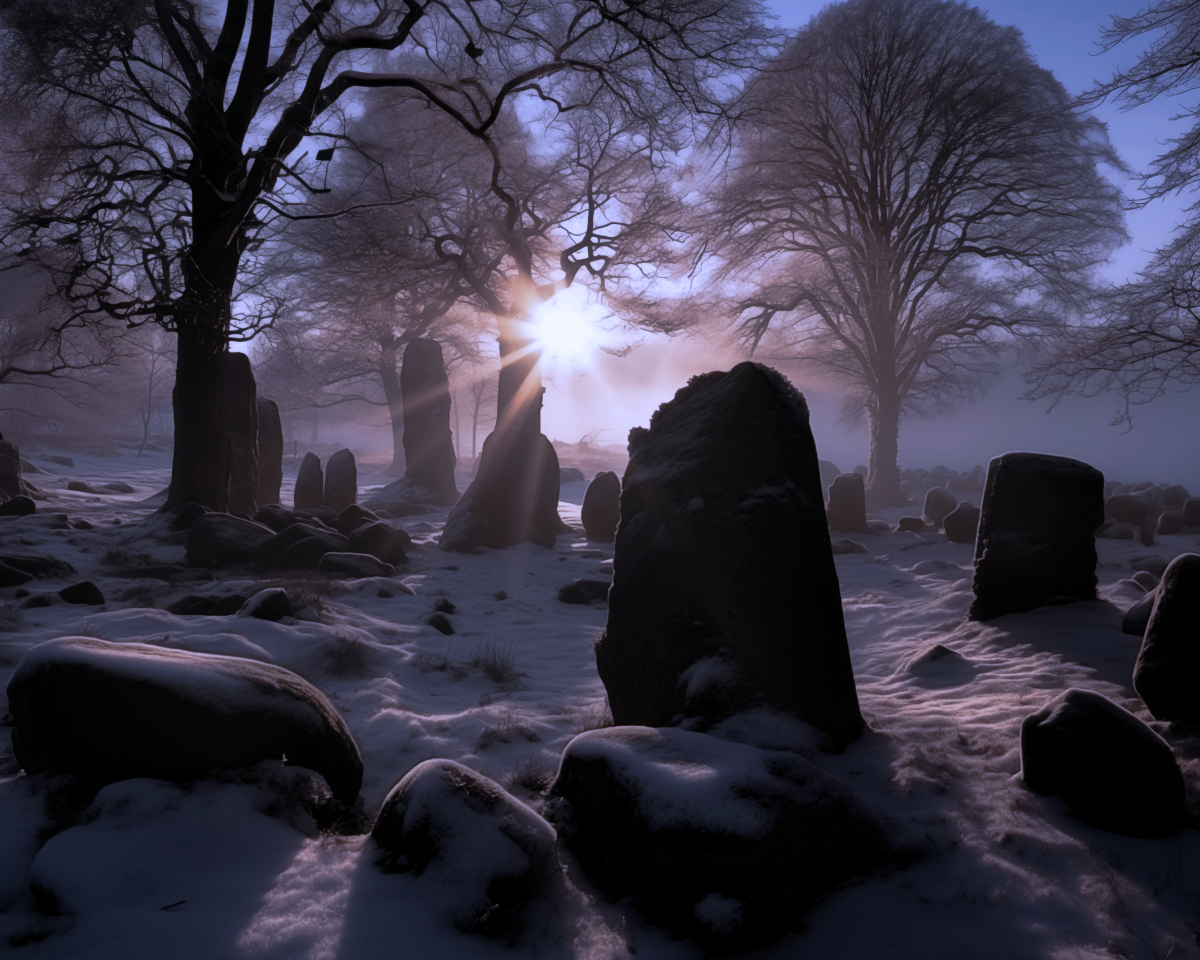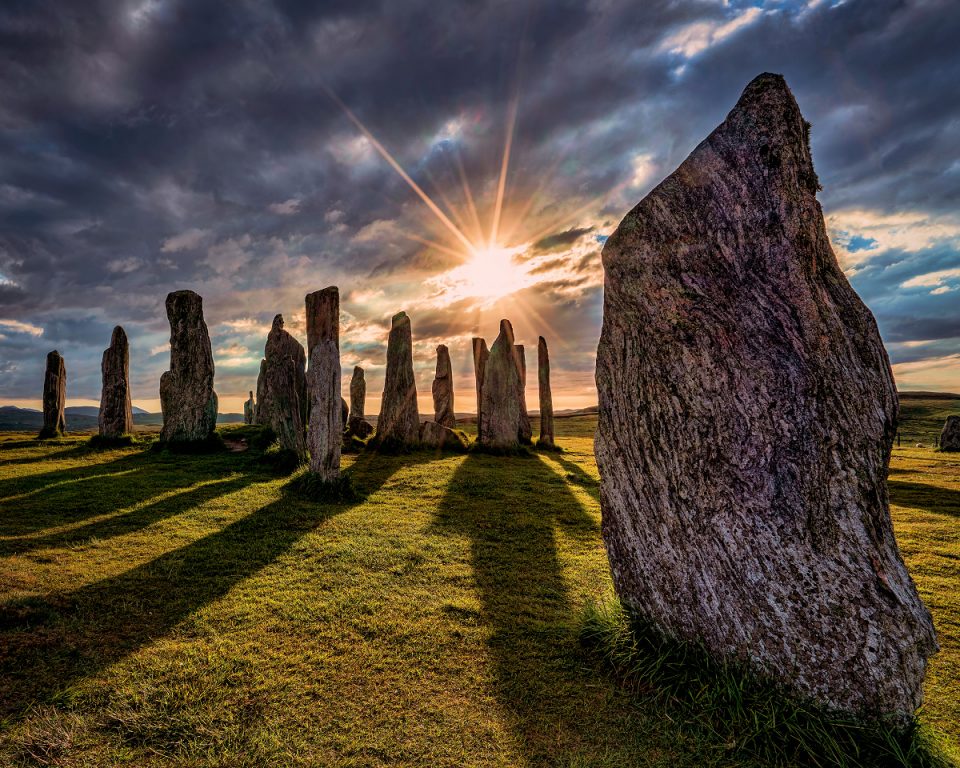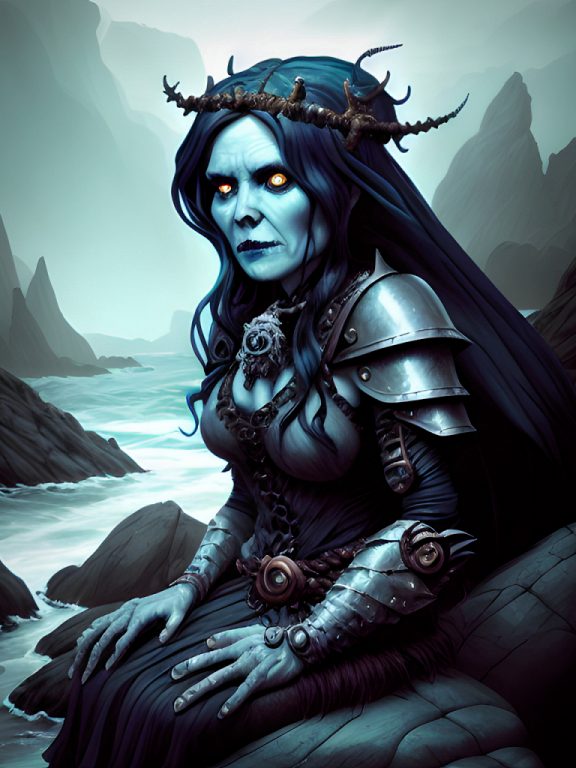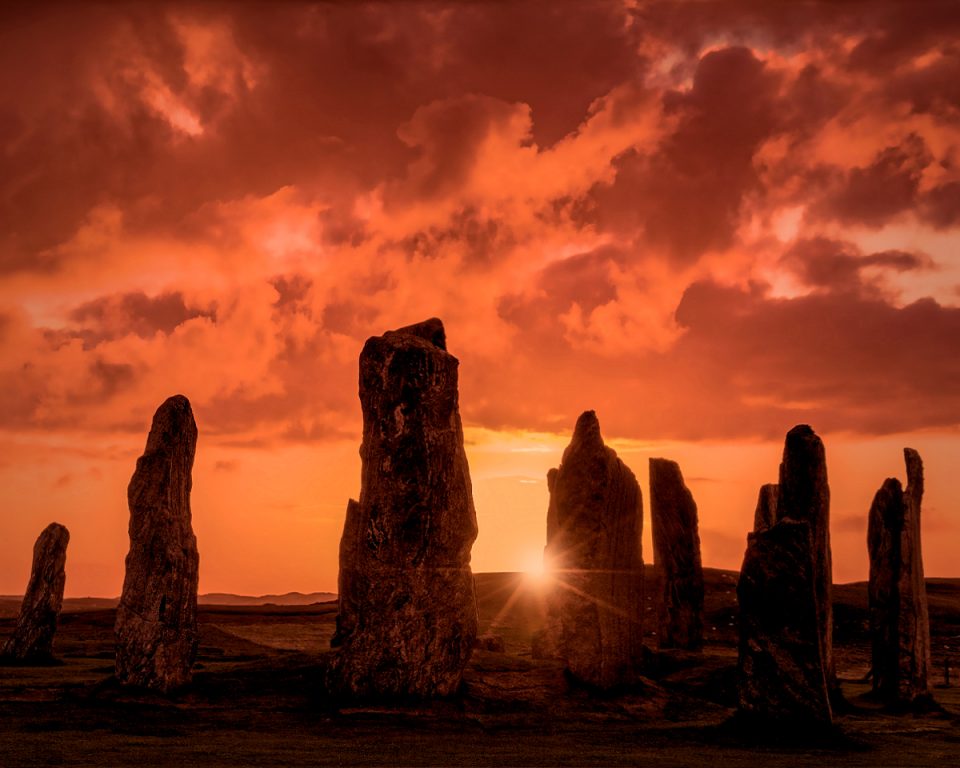The World’s Oldest Festival occurs at the Winter Solstice. The ancient ones were hunters and spent most of their time outdoors. They were followed by the first Neolithic Farmers. The seasons and weather were crucial to their existence. Because of this many ancient people had a great reverence for, and even worshipped the sun. The Norsemen of Northern Europe saw the sun as a wheel that changed the seasons. It was from the word for this wheel, ‘houl’, that the word yule is thought to have come. At mid-winter the Norsemen lit bonfires, told stories and drank sweet ale.
The ancient Romans also held a festival to celebrate the rebirth of the year. Saturnalia ran for seven days from the 17th of December. It was a time when the ordinary rules were turned upside down. Men dressed as women and masters dressed as servants. The festival also involved decorating houses with greenery, lighting candles, holding processions and giving presents.
Why so many Festivals Centre around the Winter Solstice
The convergence of numerous religious festivals around Christmastime is deeply rooted in the natural world’s rhythm, particularly the winter solstice in the Northern Hemisphere, which marks the year’s shortest day. This period has historically been significant for various cultures and religions, symbolizing themes of light overcoming darkness, rebirth, and renewal. In ancient times, people celebrated the solstice as it signified the return of longer days and the promise of spring, a time of hope and rejuvenation.
As civilizations evolved, these deeply ingrained celebrations often became intertwined with religious beliefs. For example, Christianity’s celebration of Christmas, commemorating the birth of Jesus Christ, coincides with this time. Similarly, other religious traditions, such as Judaism’s Hanukkah and Paganism’s Yule, also celebrate light, hope, and renewal during this season. The clustering of these festivals reflects humanity’s enduring response to the natural world’s cycles and the universal themes of hope, light, and new beginnings that resonate across different cultures and beliefs.
The World’s Oldest Festival and the Celts
The Winter Solstice falls on the shortest day of the year (21st December) and was celebrated in Britain long before the arrival of Christianity. The Druids (Celtic priests) would cut the mistletoe that grew on the oak tree and give it as a blessing. Oaks were seen as sacred, and the winter fruit of the mistletoe was a symbol of life in the dark winter months.
It was also the Druids who began the tradition of the yule log. The Celts thought that the sun stood still for twelve days in the middle of winter and during this time a log was lit to conquer the darkness, banish evil spirits and bring luck for the coming year.
Scotland’s Mid-winter Traditions Relating to the World’s Oldest Festival
As the northern hemisphere tilts away from the sun, heralding the onset of winter, Scotland prepares to embrace one of its most ancient and mystical traditions – the winter solstice. This celestial event, occurring in late December, is more than just a date on the calendar; it is a profound moment that captures the essence of Scottish heritage, intertwining nature’s rhythms with enduring myths and ancient monuments.
The winter solstice in Scotland is not just a day to mark the shortest period of daylight and the longest night; it is a celebration of the eternal cycle of life, an acknowledgement of the changing seasons, and a reflection on the rich tapestry of folklore that has shaped the Scottish understanding of the natural world. From the Neolithic structures aligning with the solstice sun to the legendary battle between mythical deities, Scotland’s winter solstice traditions offer a window into a world where nature and legend seamlessly intertwine.
Maeshowe: The World’s Oldest Festival is a Testament to Life’s Cycles
In the heart of Scotland’s Neolithic Orkney, Maeshowe emerges not just as an architectural wonder but as a symbol of the eternal cycle of life. This large, chambered cairn, built around 2800 BC, aligns with the winter solstice, marking the shortest day and the longest night. As the sun sets on this day, its rays penetrate the cairn, illuminating its inner chamber. This phenomenon, more than a mere alignment, symbolizes the perpetual cycle of life, death, and rebirth, echoing the natural world’s rhythms and the changing seasons.
Clava Cairns: Circles in Harmony with Nature
Near the historic site of Culloden, the Clava Cairns, dating back to 2000 BC, resonate with the themes of cyclical time and nature’s patterns. Surrounded by rings of standing stones, these cairns align with the setting sun during the winter solstice. This alignment represents not just an understanding of celestial mechanics but also a deep respect for the natural cycle of seasons. The Clava Cairns stand as serene sentinels, witnessing the endless dance of the earth and the heavens.
The Cailleach and Bride: A Battle of Seasons
At the heart of Scottish folklore lies a compelling tale of the Cailleach and Bride, symbolising the battle of the seasons. The Cailleach, a divine hag associated with winter, wields her power during the solstice, covering the land in snow and commanding the forces of winter. In contrast, Bride, the youthful goddess of spring, represents rebirth and renewal. As the Cailleach weakens, Bride’s strength grows, heralding the arrival of spring and the retreat of winter. This mythological battle mirrors the natural cycle of the seasons in Scotland, where the harshness of winter gradually gives way to the promise of spring and renewal.
I tried to capture the spirit of the cyclical nature of the Cailleach’s annual rise and fall in the following poem that I wrote:
Cailleach Beira
The Cailleach is rising, rising in the gloom.
The Cailleach is rising, foretelling summer’s doom!
Her eye is as keen as the osprey fishing for its prey,
And swifter than the salmon smolt as it swims upon the Spey.
Her skin is blue, like the dusk before the darkest night,
Her teeth are as red as rust or burning firelight.
The Cailleach is rising, rising from her sleep.
The Cailleach is rising, with autumn’s gentle creep.
Her hair is whiter than the frost upon the aspen boughs.
Fierce as the storm-tossed sea, her temper starts to rouse.
She takes her blackthorn staff and paces through the glen,
Summoning the winter, time and time again.
The Cailleach is reigning with a chilling might,
The Cailleach is heralding the long, dark winter’s night.
As she washes her dirty plaid, the sea begins to churn-
A whirlpool begins to spin, Corryvreckan starts to turn.
Then she spreads her plaid to dry upon the mountain height,
Dressing Scotland’s hills and beinns in snow so deep and white.
The Cailleach is reigning, in a realm of frost and snow.
The Cailleach is battling her most feared and deadly foe.
Upon a giant wolf she chases Angus on his steed,
In a vain attempt to capture, the Queen of Summer, Bride.
In one last gasp, she breathes out a fierce and icy gale.
But the seasons cannot stop their turn, Bride will prevail.
The Cailleach is waning, she is feeling very old.
The Cailleach is weary, and she must give up her hold.
As her eyes close in slumber, her power fades like night,
Slowly giving in to the spring’s lengthening light.
And as the days warm up, her form turns to stone.
For a while, the earth forgets the ancient fearsome crone.
The Cailleach is waning- the time has come for sleep.
Her winter’s reign is ending, in silence, still and deep.
In dreams, she waits as seasons turn
Passing time for her return
And as the snowdrops hang their heads
The spring awakening slowly spreads.
How Scotland Celebrates the World’s Oldest Festival
The world’s oldest festival as seen through Scotland’s Yule and Christmas traditions is a vibrant tapestry of ancient customs and lively festivities, reflecting its rich cultural heritage. In various towns, spectacular Fire Festivals illuminate the wintry skies, with Burghead’s Burning of the Clavie, Stonehaven’s Fireballs Ceremony, and the Up Helly Aa festival in Shetland showcasing dramatic torchlit processions and bonfires, symbolizing the purging of the old year and the welcoming of the new. Another intriguing tradition is the burning of the Cailleach Nollaig, a figure representing the winter hag, signifying the end of winter’s grip. The Scots also embrace the custom of decorating with Christmas trees and integrating Pagan sacred greenery, such as holly and mistletoe, into their festive décor, blending Christian and ancient Pagan traditions.
In Scotland’s Northern Isles, unique games like the ‘ba’ in Orkney, a mass football match through town streets, add a distinctive local flavour to the celebrations. Culminating in Hogmanay, Scotland’s renowned New Year celebration, these traditions encompass first-footing, where the first person to cross a home’s threshold after midnight brings good luck, and the singing of “Auld Lang Syne,” a global anthem for friendship and times past. These rich and varied customs enliven the festive season and keep Scotland’s historical and cultural legacy alive and thriving.
Conclusion: Celebrating the Circle of Life
The winter solstice in Scotland is a profound celebration of the circle of life and the unending cycle of seasons. From the ancient alignments of Maeshowe and the Clava Cairns to the mythic duel between the Cailleach and Bride, these traditions encapsulate the essence of the Scottish landscape and its deep connection to the natural world. As we observe the winter solstice, we partake in a timeless tradition, acknowledging the eternal cycle that moves the world and shapes our lives.




